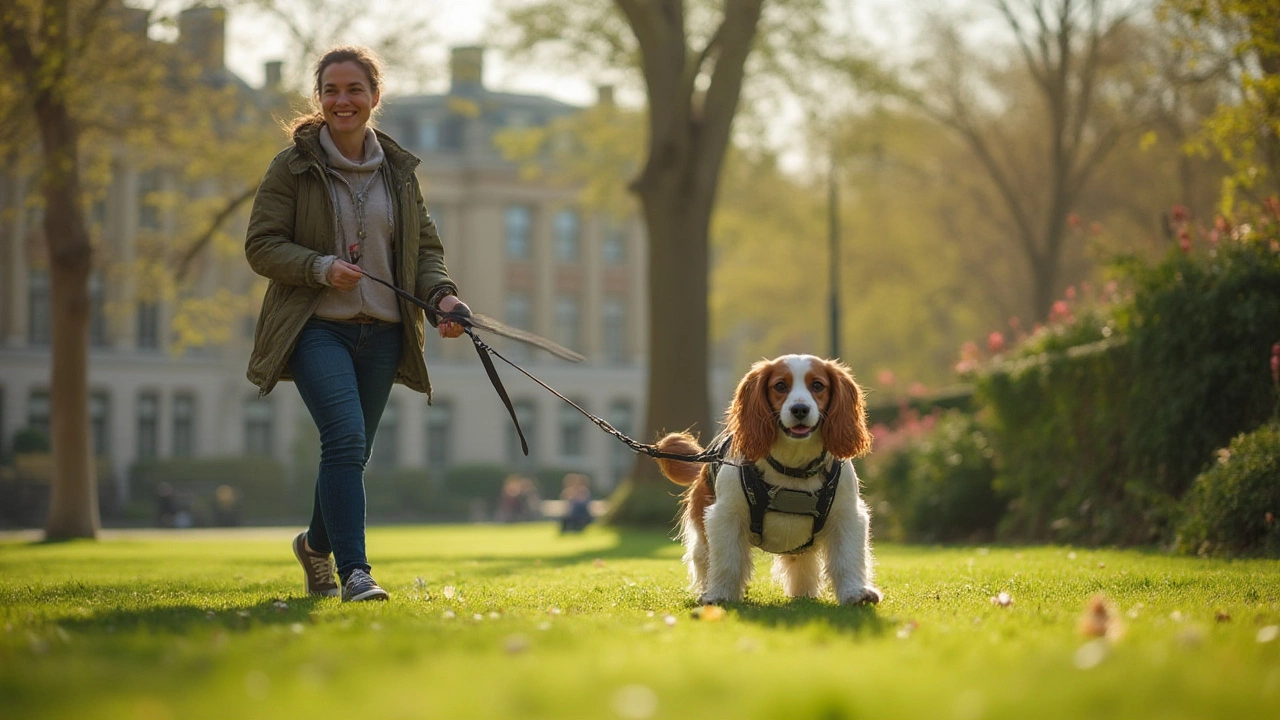No-Pull Harness: How to Choose the Right One for Your Dog
If your pup drags you down the street, a no-pull harness can change the walk from a tug‑of‑war to a relaxed stroll. Unlike a regular collar, a no-pull harness shifts pressure to the chest, which discourages pulling without hurting the neck.
Key Features to Look For
First, check the strap layout. A front‑clip design attaches the leash at the chest and instantly redirects forward movement. A back‑clip can be useful for calm dogs, but it won’t stop pulling. Second, measure your dog’s girth correctly; most brands list a range in inches or centimeters. Too tight feels like a choke, too loose lets the dog slip out.
Material matters too. Breathable nylon or mesh keeps the harness cool on hot days, while padded straps add comfort for long hikes. Look for reinforced stitching on stress points – the last thing you want is a seam giving way mid‑walk.
Fit Test Made Easy
Put the harness on while your dog is standing still. You should be able to slide two fingers between the strap and the chest. Walk a few steps; the harness should stay snug but not bounce around. If it slides up to the neck, try a smaller size or a different style with a tighter chest strap.Once it feels right, do a quick tug test. Gently pull the front leash; the dog should feel a mild pressure on the chest and turn toward you. If the dog still lunges forward, you may need a stronger front‑clip or a different brand that offers an anti‑pull tightening mechanism.
Cleaning is another practical point. Look for a harness that’s machine‑washable or easy to hand‑wash. Dirt and sweat can cause skin irritation, so a quick rinse after muddy walks is a good habit.
Price varies, but you don’t need to break the bank. Many reputable brands offer reliable no-pull harnesses for under £30. Higher‑end models might include reflective stitching for night safety or interchangeable colors, but the core function stays the same.
When buying online, read the customer reviews. Look for comments about durability and how well the front clip actually stops pulling. If several users mention the same issue, it’s a red flag.
Finally, pair the harness with basic training. A no-pull harness is a tool, not a magic fix. Teach your dog to “heel” or “stop” using treats and praise. The harness will reinforce the behavior, making walks more enjoyable for both of you.
In short, pick a front‑clip harness that fits snugly, is made of breathable material, and can be cleaned easily. Test the fit, check reviews, and combine it with simple training. Your walks will soon feel like a gentle stroll instead of a daily workout.
Best Dog Leash and Harness for Pulling: Stop Your Dog from Tugging Walks
Discover the most effective tools to stop a dog from pulling on walks. From no-pull harnesses to clever training tips, get specific advice that works with real dogs.
